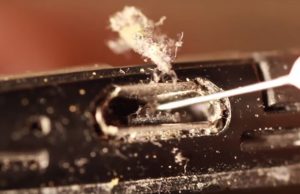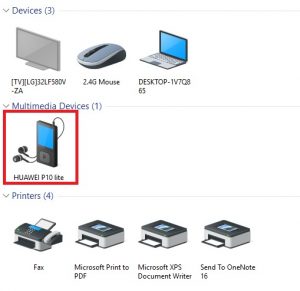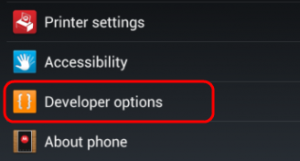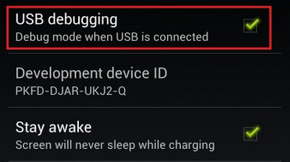But even if almost all Android models are perfectly capable of connecting to a PC wirelessly, most of us still prefer to plug them into their PC the old fashion way when trying to transfer files. There are advantages of going with the classic approach – the transfer speed is usually faster and the connection is, in theory, more reliable. Unfortunately, in reality, things don’t always work as they should and your mobile device might not get detected by your PC. Ideally, when you connect your Android device to a PC, Windows will immediately treat it as an MTP (Media Transfer Protocol) connection and install the necessary drivers so that it shows inside File Explorer. If you rooted your device, used it as an emulator for an Android Studio / Eclipse project or installed a new ROM on it, chances are you installed the ADB driver (Android Debug Bridge). This will allow your PC to send commands to your device but has the habit of tampering with the standard MTP settings, which will cause your device to stop appearing on My computer. But keep in mind that the ADB driver is not solely responsible for preventing your phone from showing up on PC. This problem has numerous potential causes and can appear on devices that never used the ADB driver. With this in mind, we’ve created a collection of methods that will make your phone appear in File Explorer again. Since the guide includes a lot of troubleshooting, we ask that you start with the first potential fix and move down until you find a method that works for you.
Method 1: Restarting both devices and using another port
If you connect your Android device and nothing happens, this should be the first course of action. USB ports can easily become faulty, so it’s usually best to rule out the obvious stuff first. Here’s what you need to do:
Method 2: Use a different USB cable
Now let’s rule out the possibility of a faulty USB cable. USB cables don’t always break completely, that’s why it’s usually hard to identify them as the problem. If you look closely inside the micro-USB port, you’ll see a few gold connectors. They are used for charging purposes but also facilitate the transfer of information when connected to a different device. It’s enough for one or two to change their position or break for the cable to stop working. Chances are it will continue to charge but it won’t have enough functionality to support a file transfer. Here’s what you need to do:
Method 3: Cleaning the micro-USB port
Let’s make sure there aren’t any foreign objects that are blocking the micro-USB port, preventing the file transfer from happening. If you use to carry your phone in your pocket too much, the micro-USB port might suffer from lint accumulation. This can hinder the transfer of electricity and prevent your smartphone from exchanging data. Here’s what you need to do: If you went on with the troubleshooting guides above, we successfully eliminated most hardware related issues. Now let’s start dealing with the potential software problems.
Method 4: Connecting as Storage
If your device isn’t showing up in My Computer, you might be using the wrong connection mode. Android knows several different modes to connect with other devices – charging only, MTP, PTP, and MIDI, among others. For our purpose, we need to use an MTP connection. Here’s what you need to do:
Method 5: Updating the MTP Driver
If the methods above didn’t work, let’s see if you’re dealing with a driver problem. We’ll start by confirming that your PC sees your Android as an MTP device. Open Control Panel and go to Devices and Printers. If you manage to locate the name of your Android device, the MTP connection is working properly. If your device is named MTP or Unspecified, you’ll need to update some drivers.
Fortunately, you can easily fix it by tweaking some settings in Device manager. Here’s how:
- The old driver should be replaced with a new one. Wait until the process finishes. Your Android device should now be seen as a multimedia device in File Manager.
Method 6: Re-Installing Android Drivers
While we’re here, let’s make sure you have the latest Android drivers installed on your PC. There’s also a slight chance your drivers might not have installed properly or have been tampered by other services such as the ADB. Here’s how to reinstall the Android drivers:
Method 7: Download Media Feature Pack (Windows 10 only)
If updating the MTP driver and the Android driver didn’t do the trick, maybe a different driver is the culprit. As I’ve stated above, your Android device uses an MTP protocol to transfer data back and forth to your PC. MTP transfer has common processes with Windows Media Player, Windows 10 MTP transfer has common processes with Windows Media Player and some versions of Windows 10 versions don’t have the Media Player installed by default. In those cases, related technologies such as the MTP protocol won’t work as they should. Luckily, this can be fixed by installing the Media Feature Pack for the N and KN versions of Windows 10. Download it from here.
Method 8: Connecting as a USB Mass Storage
Some versions of Android(particularly older versions) will let you connect as a USB Mass Storage device. USB Mass storage doesn’t use the same drivers as an MTP connection. It’s similar to connecting an external SD card or a flash drive to your pc. Instead of recognizing your device as an Android, your PC will treat it like mass storage volume and will mount it accordingly. Of course, you won’t be able to do things like connecting to your smartphone PC suite, but at least you’ll be able to move files back and forth. Here’s how:
Method 9: Enabling USB Debugging
USB Debugging is meant for advanced users that test and decompile apps on real devices. But since it works with elevated privileges, it might just solve your problem. Here’s what you need to do:
FIX: Android Phone Showing Unknown As My Phone NumberFix: SD Card Music Not Showing Up on Android PhoneFix: Kindle not Showing up on PCFix: New Hard Drive not showing up in Disk Management













